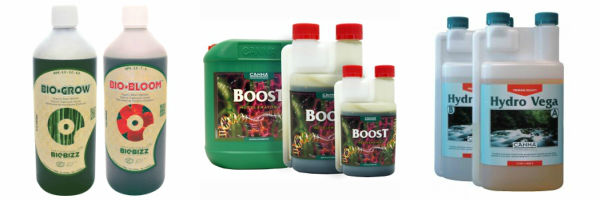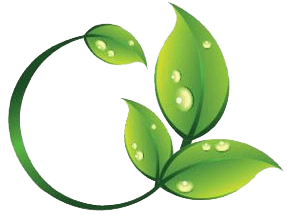Find the Nutrient Balance
Geting the correct chemical levels from your nutrients
Introduction
Any plant growth system needs a good balance of nutrients for a strong foundation and a prosperous growth. It is essential to know from the outset what is required and what can go wrong if the ratios are not ideal. Two things to bear in mind are the composition of each nutrient solution that is used and the EC (strength) that is needed at each stage of the plants' progress.Composition of the Nutrient Solution
Nutrient solutions that are readily mixed are available although these are often more suitable for growth systems that are rooted (excuse the pun!) in soil or a potting mix that is already fertilised. Because of the growing medium the associated nutrients do not necessarily have the complete range of chemicals that are required. When growing with a hydroponic system is is wiser to choose a plant food that is complete.
The complete chemical elements that a plant requires are listed here:
- Boron (B)
- Calcium (Ca)
- Chlorine (Cl)
- Copper (Cu)
- Iron (Fe)
- Phosphorus (P)
- Potassium (K)
- Magnesium (Mg)
- Manganese (Mn)
- Molybdate (Mo)
- Nitrogen (N)
- Sulphur (S)
- Zinc (Zn)
Different brands will contain different levels and ratios of these and maybe a few extras such as nickel or silica and can be beneficial to certain crops.
Nutrient Problems
Some of the reasons for deficiencies are listed below....
- A low nutrient strength that can cause an overall deficiency for your plants
- An imbalanced mix meaning that your plants are lacking in one or more chemicals
- Forgetting to add one of the nutrients when creating the mix. Rare, but possible!
- Environmental conditions that result in an unexpected uptake of certain nutrients that was not expected
Deficiency Indicators
Nitrogen: Short plants with leaves that are a pale green/yellow colour. This is particularly obvious on the older leaves. The stems can have a hint of purple to them.
Phosphorus: Stunted plants that are a darker green than usual. Again, this happens on the older leaves and the plant takes longer to mature. An environment that is too cold can cause this, even if the nutrient solution contains the correct amount of phosphorous.
Potassium: Aged leaves become yellowed with scattered dark (brown or black) spots. If there is way too little potassium then all foliage will curl and become too yellow.
Sulphur: On the new growth the leaves will become yellowed. Thankfully this deficiency is not as common as others.
Magnesium: Older leaves can have yellowed areas between the veins. However the veins remain green.
Calcium: The younger leaves are affected first. They are small with spotted dead areas. The development of buds is as affected and the root tips can die back.
Iron: Similar to the magnesium deficiency there can be yellowing between the veins and the veins remain green. The difference here is that a lack of iron will cause thus to happen on the new leaves as opposed to the older ones/
Chlorine: The leaves will wilt, begin to yellow and eventually become bronze in colour. The plant roots become stunted.
Manganese: Yellowing on the leaves which leads to areas that are dry and brown. The leaves can begin to fall.
Boron: A reduction in the plant size with swollen root tips and brittle leaves.
Zinc: Short plants with distorted leaf edges and potential yellowing between the veins.
Copper: Dark green and twisted leaves with brown spots.
Molybdenum: Damage to the leaf edges which appears as if they have been scorched. Yellowing between the veins can also occur on the older leaves.
Solution Strength and Measurement
The strength of the nutrient solution has a big effect on the plant growth even when the chemical balance is spot on and measuring the strength is fairly straightforward. The traditional unit of measurement is ppm (parts per million) although the modern method is a more accurate unit which is EC (electrical conductivity).It is the EC that the root system will respond to and there are different types of EC meters available which can also be known as CF meters. Given the area of testing it is important that the meter is water-resistant and the Essentials EC or the Truncheon are perfect in this respect.
It is important to grow at the correct EC for your crop and also for your system in general. The desired EC varies between different plants and if it is too high they will endure a symptom known as 'water stress'. This is where the plants start to lose water and begin to wilt. If the EC is only a tiny bit higher than it should be the plants will have darker leaves than usual. On the flip-side, if the EC is too low then too much water will be taken in which results in a floppy and lighter green appearance.
If the plant contains edible fruits then another obvious flaw will be a bland flavour, lack of firmness and a lighter shade of colour.
The main things to focus on for a successful nutrient intake from your plants is the ratio that is required, a correct concentration measurement and frequent checks of the EC. Keep doing these checks on a regular basis and help to eliminate problems before they occur.


